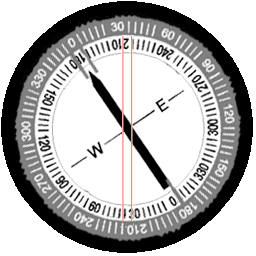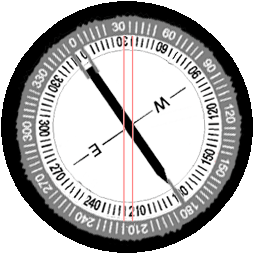Underwater Navigation
Effective navigation helps you reach your destination, prevent long surface swims, and avoid hazardous areas. It's one of the most important skills in diving, and one that you'll improve as you gain experience.
Navigation is accomplished with the aid of a compass, natural navigation aids, or a combination of both. When you've mastered navigation, you'll be able to surface very close if not exactly where you originally descended.

Natural Navigation Aids
There are many natural navigation aids you can use while diving. When diving near shore, waves create navigation aids that indicate the direction towards shore. One example is ripple marks in the sand, which run parallel to shore and become larger as you swim closer to shore. Additionally, waves create a back-and forth movement of water called surge, and this movement is usually perpendicular to the shore.
Depth is another navigation aid. Near shore, you can tell if you're swimming towards shore if the depth decreases. Or if you know a boat's anchor is at 60 feet, you can swim to a depth of 60 feet and follow bottom contours to locate the anchor.
Landmarks such as reefs and artifacts are valuable navigation aids. And if these landmarks cast shadows, you can navigate based on the direction those shadows are cast.
When boat diving, the boat may be visible during your dive, so swim towards the boat to locate your ascent location. If the boat is anchored, the anchor line provides a valuable navigation aid that you can follow to locate the boat.

Using Your Compass
A compass allows accurate navigation even at night or when visibility is low. To ensure accuracy of your compass readings, there are some guidelines that must be followed.
First, always hold the compass with the lubber line aligned with your direction of travel. This ensures consistency in how you read the compass.
Next, hold the compass away from magnetic objects such as your cylinder, knife, or another compass. This prevents the needle from deviating away from magnetic north.
Finally, be sure the compass is level when you're navigating. This prevents the needle from tilting, which can affect the accuracy of the compass.

Setting a Reciprocal Course
A reciprocal course is a straight path to a destination and back to your starting point. To dive a reciprocal course:
- Point the compass's lubber line towards your destination.
- Turn the bezel until the double index mark aligns with the magnetic north needle.
- Begin navigating your course. You are swimming in the correct direction if the needle aligns with the two index marks.
- When you reach your turn-around point, turn around until the needle aligns with the single index mark, and keep them aligned as you swim back to your origin.

